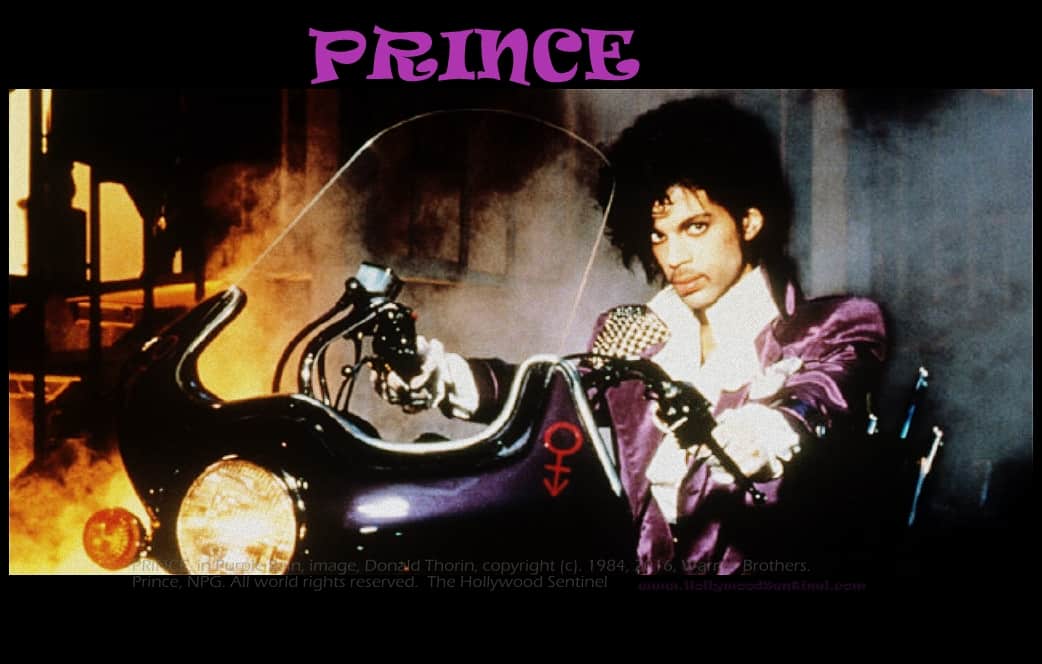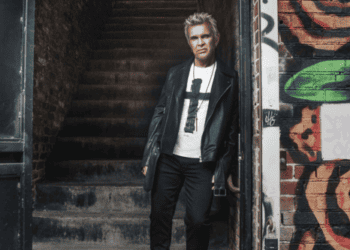It is a terribly sad day for the world of music. Prince has passed on. Gone before his time, at the mere age of 57, Prince was one of the few musical icons and true greats of all generations.
The first time I heard Prince, I was blown away. Wild, unpredictable, and perfect as a singer, his voice, range and style knew no bounds. Seeing him on stage and screen, in music video and film was equally exciting. A great performer, he took entertainment and music to a whole new level, blending genres or rock, pop, soul, funk, rap, disco, new wave, and punk, blues and bluegrass among more, all together as one.
A great musician, he was a master not only on vocals, but also keyboards and guitar. On guitar he soared, like few others, pushing the envelope of the greatest electrical instrument to its outer limits.
A musical genius, the artist Prince was appreciated and loved by all colors, creeds, classes, continents, and generations. Kids loved him as equally as parents and grandparents. His music was undeniably brilliant, and his unmistakable voice, stunning range, and exotic sounds were out of this world.
From his legendary club classics 1999, When Doves Cry, Purple Rain, and Little Red Corvette, Kiss, Delirious, and U Got the Look among more, when he was at his best, Prince was so great, it was simply mind blowing. None were better at what he did. I had just been listening to When Doves Cry just two days ago, thinking of Prince, and hoping he was OK after I heard he had to cancel one of his shows due to the flu. People do not just die from the flu. May the truth come out soon, and may Prince forever have his peace, wherever now he may be rocking.
-Bruce Edwin
PRINCE
Biography
Few artists have created a body of work as rich and varied as Prince. During the ’80s, he emerged as one of the most singular talents of the rock & roll era, capable of seamlessly tying together pop, funk, folk, and rock. Not only did he release a series of groundbreaking albums; he toured frequently, produced albums and wrote songs for many other artists, and recorded hundreds of songs that still lie unreleased in his vaults. With each album he released, Prince has shown remarkable stylistic growth and musical diversity, constantly experimenting with different sounds, textures, and genres.
Prince’s first two albums were solid, late-’70s funk-pop. With 1980’s Dirty Mind, he recorded his first masterpiece, a one-man tour de force of sex and music; it was hard funk, catchy melodies, sweet soul ballads, and rocking guitar pop, all at once. The follow-up, Controversy, was more of the same, but 1999 was brilliant. The album was a monster hit, selling over three million copies.
Purple Rain made Prince a superstar; it eventually sold over ten million copies in the U.S. and spent 24 weeks at number one. Partially recorded with his touring band, the Revolution, the record featured the most pop-oriented music he has ever made. Instead of continuing in this accessible direction, he veered off into the psychedelia of Around the World in a Day, which sold over two million copies. In 1986, he released Parade.
By 1987, Prince’s ambitions were growing by leaps and bounds, resulting in the sprawling masterpiece Sign ‘O’ the Times. Prince was set to release the hard funk of The Black Album by the end of the year, yet he withdrew it just before its release, deciding it was too dark and immoral. Instead, he released the confused Lovesexy in 1988. With the soundtrack to 1989’s Batman he returned to the top of the charts. The following year he released Graffiti Bridge (the sequel to Purple Rain).
In 1991, Prince formed the New Power Generation. With their first album, Diamonds and Pearls, Prince reasserted his mastery of contemporary R&B; it was his biggest hit since 1985. The following year, he released his 12th album, which was titled with a cryptic symbol; in 1993, Prince legally changed his name to the symbol. In 1994, after becoming embroiled in contract disagreements with Warner Bros., he independently released the single “The Most Beautiful Girl in the World,” likely to illustrate what he would be capable of on his own; the song became his biggest hit in years. Later that summer, Warner released the Come under the name of Prince; the record was a moderate success, going gold.
In November 1994, as part of a contractual obligation, Prince agreed to the official release of The Black Album. In early 1995, he immersed himself in another legal battle with Warner, proclaiming himself a slave and refusing to deliver his new record, The Gold Experience, for release. By the end of the summer, a fed-up Warner had negotiated a compromise that guaranteed the album’s release, plus one final record for the label. The Gold Experience was issued in the fall; although it received good reviews and was following a smash single, it failed to catch fire commercially. In the summer of 1996, Prince released Chaos & Disorder, which freed him to become an independent artist. Setting up his own label, NPG (which was distributed by EMI), he resurfaced later that same year with the three-disc Emancipation, which was designed as a magnum opus that would spin off singles for several years and be supported with several tours.
However, even his devoted cult following needed considerable time to digest such an enormous compilation of songs. Once it was clear that Emancipation wasn’t the commercial blockbuster he hoped it would be, Prince assembled a long-awaited collection of outtakes and unreleased material called Crystal Ball in 1998. Prince then released a new one-man album, New Power Soul, just three months after Crystal Ball.
A year later, with “1999” predictably an end-of-the-millennium anthem, Prince issued the remix collection 1999 (The New Master). A collection of Warner Bros.-era leftovers, Vault: Old Friends 4 Sale, followed that summer, and in the fall Prince returned on Arista with the all-star Rave Un2 the Joy Fantastic. In the fall of 2001 he released the controversial Rainbow Children, a jazz-infused circus of sound trumpeting his conversion to the Jehovah’s Witnesses. He further released 2003’s N.E.W.S., a four-song set of instrumental jams. Prince rebounded in 2003 with the chart-topping Musicology, a return to form that found the artist back in the Top Ten, even garnering a Grammy nomination for Best Male Pop Vocal Performance in 2005.
In early 2006 he was the musical guest on Saturday Night Live, performing two songs with a new protégée, R&B singer Tamar. A four-song appearance at the Brit Awards with Wendy, Lisa, and Sheila E. followed. Both appearances previewed tracks from 3121, which hit number one on the album charts soon after its release in March 2006. Planet Earth followed in 2007, featuring contributions from Wendy and Lisa. In the U.K., copies were cover-mounted on the July 15 edition of The Mail on Sunday, provoking Columbia — the worldwide distributor for the release — to refuse distribution throughout the U.K. In the U.S., the album was issued on July 24.
LotusFlow3r, a three-disc set, came in 2009, featuring a trio of distinct albums: LotusFlow3r itself (a guitar showcase), MPLSound (a throwback to his ’80s funk output), and Elixer (a smooth contemporary R&B album featuring the breathy vocals of Bria Valente). Despite only being available online and through one big-box retailer, the set debuted at number two on the Billboard 200 chart. A year later, another throwback-flavored effort, 20Ten, became his second U.K. newspaper giveaway. No official online edition of the album was made available. From mid-2010 through the end of 2012, Prince toured throughout Europe, America, Europe again, Canada, and Australia.
During 2013, Prince released several singles, starting with “Screwdriver” and continuing with “Breakfast Can Wait” in the summer of that year. Early in 2014, he made a cameo appearance on the Zooey Deschanel sitcom The New Girl, appearing in the episode that aired following the Super Bowl. All this activity was prelude to the spring announcement that he had re-signed to Warner Bros. Records, the label he had feuded with 20 years prior. As part of the deal, he wound up receiving the ownership of his master recordings and the label planned a reissue campaign that would begin with an expanded reissue of Purple Rain roughly timed to celebrate its 30th anniversary. First came two new albums: Art Official Age and PlectrumElectrum, the latter credited to 3rdEyeGirl, the all-female power trio that was his new-millennial backing band. Both records came out on the same September day in 2014. Almost a year to the date, he released HITNRUN Phase One, with contributions from Lianne La Havas, Judith Hill, and Rita Ora. Art Official Age was released in 2016.
To get Prince Music including his new album, visit i-tunes.
http://order.artofficialage.com
Biography, copyright, 2016, -tunes, Apple. Prince is copyright, 2016, Prince, New Power Generation (NPG) and Warner Brothers (WB), all world rights reserved.








